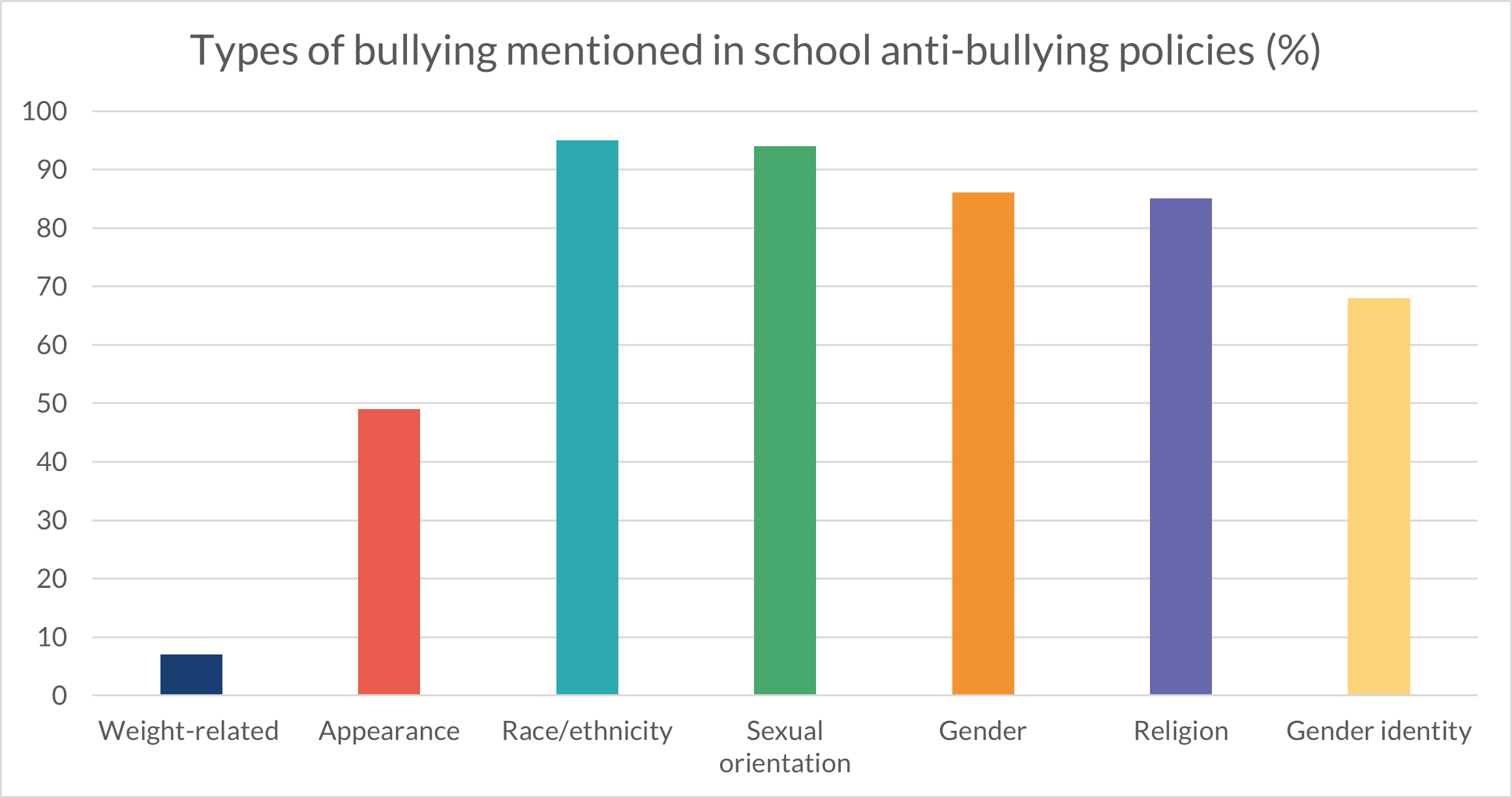I think I’ve just found a blind spot in school anti-bullying policies
2 June 2025
Dr Beki Langford is a Lecturer in Public Mental Health at the University of Bristol. She has been looking at school bullying policies to see if they address weight-related bullying as part of a project with us. Here’s what she found.
I don’t want to ruin your day, but can I ask you a question? Were you bullied at school? I hope not. But given that over half of UK pupils say they have been bullied, chances are you were.
If you were, you probably remember to this day how awful it felt. That stinging shame, the burning embarrassment, perhaps even the physical blows. It hurts. And that hurt can last. It will also likely have shaped how you think and behave to this day.
Now, another question: what’s the most common reason for being bullied? Think back to the kids who were routinely picked on at your school and you’ll probably get it.
Yep, you’re right – it’s those kids subject to relentless name calling and humiliation – ‘fatty’, ‘thunder thighs’, ‘chunk’, ‘lardo’.
Bullying because of your weight is the most common reason for being bullied – much more common than other (equally horrible) forms of bullying like racism or homophobia.
But perhaps because it is so common, weight-related bullying may be harder to address. Speaking with teenagers at the start of this project, we heard that weight-related bullying could be dismissed as just ‘banter’ – by students and staff alike. Weight has long been a sensitive issue in society, but it is not a ‘protected characteristic’, like race or sexual orientation. This may make it seem like the line between acceptable and unacceptable comments and behaviour is blurrier for weight.
Schools have a legal duty to protect their students from bullying. So, what do school bullying policies say about weight-related bullying? Turns out: not much.
We looked at the anti-bullying policies of all secondary schools in our local area – 255 in total – to see if they mentioned weight-related bullying. We also checked whether they mentioned other forms of bullying based on race, religion, sexual orientation, gender or gender identity.
So, what did we find? Only 7% of school policies mentioned weight-related bullying. This was in stark contrast to other types of bullying: 95% mentioned race or ethnicity, 94% sexual orientation, 86% gender, 85% religion and 68% gender identity.

Nearly half of school policies (49%) did mention bullying because of appearance. This is better than nothing. But appearance can cover a whole host of things – size certainly, but also height, hair colour, clothing, wearing glasses…
Evidence from America suggests it’s important to talk about weight, not appearance, in policies. States which mention weight in their anti-bullying laws tend to have lower levels of weight-related bullying. When they only mention appearance, there’s no impact.
So, what does this all mean? It seems that school anti-bullying policies have a bit of a blind spot when it comes to weight-related bulling. There’s a clear mismatch between the type of bullying students experience in schools and what’s included in anti-bullying policies.
It’s good to see schools saying they won’t tolerate bullying because of the colour of someone’s skin, or who they find attractive. But shouldn’t they also be saying it’s not OK to bully someone because of their weight?
We’d like to see schools explicitly stating they won’t tolerate weight-related bullying by adding this into their policies. But we also need to think about getting that policy into practice. How can schools create a culture where weight-related bullying isn’t acceptable? What would help staff and students feel more confident in calling out and addressing weight-related bullying?
We’ve been awarded a Knowledge Mobilisation catalyst award that’s enabled us to speak to school staff about this issue. It will also help us think about how to tackle this issue on the ground in schools.
We know changing policies and culture in schools won’t be easy. But we hope that our work will make a difference, so in the future no student experiences bullying because of their weight.
Paper
